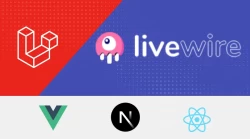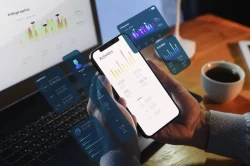
- 06 April, 2024
- Dinesh Sailor
Mobile App Development Web Development Offshore Development UI/UX Design IoT
In digital product development, three terms often emerge: Proof of Concept (POC), Prototype, and Minimum Viable Product (MVP). While they might seem interchangeable initially, they serve distinct purposes in the product development lifecycle. Understanding the nuances between these concepts is crucial for efficiently steering a project toward success.
What is a Proof of Concept (POC)?
A proof of concept is a demonstration that a certain idea or approach is feasible. POCs concentrate on technical feasibility. They aim to validate whether a particular technology or methodology can achieve the desired outcome. POCs are often used to mitigate risks associated with adopting new technologies or implementing complex features before committing significant resources to full-scale development.
Let's understand POC benefits through a real-time example of Internet of Things (IoT) Solutions for Smart Homes. A startup specializing in smart home technology is exploring the possibility of integrating voice recognition capabilities into its existing product line. However, before making a substantial investment in development, they decide to conduct a proof of concept (POC) to assess the feasibility of this endeavor.
- Product-Market Fit: The team can understand the unique pain points and desires of homeowners regarding home automation, security, and energy efficiency. Engage early adopters through surveys, user interviews, and beta testing to gather feedback on features, usability, and value proposition. Iterate based on insights to ensure the IoT solution aligns closely with market demands and preferences, driving widespread adoption and satisfaction.
- Technology Assessment: The technical team researches and evaluates various voice recognition APIs and SDKs available in the market. They consider factors such as accuracy, language support, customization options, and compatibility with their existing hardware and software infrastructure.
- Prototype Development: Using the selected voice recognition technology, the team develops a basic prototype to demonstrate how voice commands can be used to control smart home devices such as lights, thermostats, and security cameras. They focus on achieving high accuracy and responsiveness in recognizing spoken commands and executing corresponding actions.
- Testing and Validation: The prototype is tested in real-world scenarios, simulating different environmental conditions and user interactions. The team gathers feedback from both internal testers and external beta users, assessing the performance of the voice recognition system in terms of accuracy, speed, and reliability.
Based on the results of the POC, the startup gains valuable insights into the technical feasibility and potential challenges associated with implementing voice recognition in their smart home products. They identify areas for optimization and improvement, such as enhancing noise cancellation algorithms or integrating with additional voice assistant platforms. Armed with this knowledge, the startup can make informed decisions about whether to proceed with full-scale development or explore alternative solutions.
What is a Prototype?
A prototype is a tangible representation of a product idea. It aims to demonstrate the functionality and user experience of the final product. Prototypes can vary in fidelity, ranging from low-fidelity sketches to high-fidelity interactive simulations. The primary goal of a prototype is to gather feedback from stakeholders and end-users, allowing for iterations and improvements before moving forward with development.
Let's take a real-time example of Mobile App Development for a Financial Institution. A leading financial institution is planning to launch a new mobile banking app to enhance customer experience and streamline banking services. Before investing in full-scale development, they decide to create prototypes to test different aspects of the app's design and functionality.
- User Interface Design: The design team creates several low-fidelity prototypes using wireframing tools to explore various layout options for the app's home screen, account dashboard, and transaction history. They focus on simplicity, intuitiveness, and accessibility to ensure a seamless user experience.
- Navigation Flow: With the help of medium-fidelity prototypes, the UX team simulates different navigation flows within the app, such as transferring funds, paying bills, and contacting customer support. They observe how users interact with each screen and identify any navigation issues or bottlenecks that need to be addressed.
- Feature Testing: High-fidelity prototypes are developed to showcase specific features of the app, such as mobile check deposits, budget tracking, and personalized notifications. Users are invited to participate in hands-on testing sessions, providing valuable feedback on the functionality, usability, and performance of each feature.
Based on the feedback gathered from stakeholders and end-users during the prototype testing phase, the financial institution iterates on the app's design and functionality, making refinements and improvements where necessary. Once the prototypes meet the desired standards of usability and user satisfaction, the institution proceeds with full development, confident that the final product will resonate with its target audience.
Types of Prototypes:
- Low-Fidelity Prototypes: These are simple representations, often in the form of sketches or wireframes, focusing on basic layout and structure without intricate details.
- Medium-Fidelity Prototypes: These prototypes add more detail, incorporating visual elements and basic interactions to provide a clearer picture of the final product's look and feel.
- High-Fidelity Prototypes: These prototypes closely resemble the final product, featuring detailed designs, interactive elements, and sometimes even functional components, offering a realistic user experience.
What is a Minimum Viable Product (MVP)?
A Minimum Viable Product (MVP) is a version of a product with the minimum features required to satisfy early customers and validate its underlying assumptions about the market. The primary goal of an MVP is to deliver value to users quickly while minimizing development costs and time to market. It serves as a foundation upon which further iterations and enhancements can be built based on feedback and data insights.
Key Characteristics of an MVP:
- Minimum Features: An MVP includes only essential features that address the core needs of the target audience. It focuses on solving a specific problem or delivering a key benefit without unnecessary complexity.
- Fast Development: The development of an MVP follows an agile approach, emphasizing speed and efficiency. Rather than striving for perfection, the focus is on delivering a functional product within a short timeframe.
- Feedback-driven: The MVP is released to real users early, allowing developers to gather feedback and validate assumptions. This feedback loop informs subsequent iterations and helps prioritize future development efforts.
- Iterative Improvement: Based on user feedback, data analytics, and market validation, the MVP is iteratively improved and expanded over time. Each iteration builds upon the previous version, gradually enhancing the product's value and usability.
Let's consider the example of a startup developing a social media platform for outdoor enthusiasts called "AdventureConnect." The founders have a vision of creating a vibrant community where users can share their outdoor experiences, discover new destinations, and connect with like-minded individuals. However, instead of building a full-featured platform from the outset, they decide to develop an MVP to test their concept and gather feedback.
Minimum Features of AdventureConnect MVP:
- User Registration and Profile Creation: Users can sign up for an account, create a profile, and specify their outdoor interests and preferences.
- Content Sharing: Users can upload photos, videos, and posts about their outdoor adventures, tagging locations and adding captions.
- Social Interaction: Users can follow other adventurers, like and comment on their posts, and send direct messages.
- Location-based Discovery: Users can explore a map interface to discover nearby outdoor activities, hiking trails, camping spots, and other points of interest.
Development and Release:
The development team prioritizes the implementation of these core features, aiming to launch the MVP within a few months. They leverage existing frameworks and third-party APIs to expedite development and keep costs low.
Once the MVP is ready, AdventureConnect is released to a select group of outdoor enthusiasts who are invited to join as early adopters. The founders actively solicit feedback through surveys, user interviews, and in-app analytics, closely monitoring user engagement and satisfaction metrics.
Iterative Improvement:
Based on the feedback received from early users, AdventureConnect's development team iterates on the MVP, implementing enhancements and addressing user pain points. They gradually introduce new features such as event organizing, group chats, and personalized recommendations based on user activity and preferences.
Over time, AdventureConnect has evolved from a basic MVP into a robust social platform, attracting a growing user base and establishing itself as a go-to destination for outdoor enthusiasts worldwide. By starting with a Minimum Viable Product and iteratively refining its offering based on user feedback, AdventureConnect successfully validates its concept and delivers a valuable solution to its target audience.
Here's a table outlining the key differences between Proof of Concept (POC), Prototype, and Minimum Viable Product (MVP):
| Aspect | Proof of Concept (POC) | Prototype | Minimum Viable Product (MVP) |
|---|---|---|---|
| Purpose | Validate technical feasibility | Demonstrate functionality and UX | Test market demand and viability |
| Focus | Technical aspects and feasibility | User experience and design | User value and market fit |
| Scope | Narrow, focused on specific features | Variable can range from low to high fidelity | Minimal, includes core features for initial release |
| Audience | Internal stakeholders, technical teams | Stakeholders, end-users | Early adopters, target market |
| Development Stage | An early stage of development | Early to mid-stage of development | Mid to late-stage development |
| Risk Mitigation | Identifies technical risks and challenges | Identifies usability issues and design flaws | Validates market assumptions |
| Feedback | Technical validation and feasibility | User feedback on design and functionality | User feedback on value proposition and features |
| Investment Required | Moderate, to explore feasibility | Moderate to low, depending on the fidelity | Moderate to high, for product validation and iteration |
| Deliverable | Conceptual or functional prototype | Visual representation of the product | Functional product with limited features |
| Timeframe | Short-term, typically weeks to months | Short-term, weeks to a few months | Medium-term, months to a year |
Understanding these distinctions is crucial for effectively managing product development efforts and aligning them with business goals and objectives.
Conclusion:
In summary, a Proof of Concept (POC) focuses on validating technical feasibility, typically in the early stages of development, to mitigate technical risks. A Prototype, on the other hand, aims to demonstrate functionality and user experience, gathering feedback on design and usability. Finally, a Minimum Viable Product (MVP) tests market demand and viability by delivering a functional product with core features, catering to early adopters, and validating product-market fit. Each serves a distinct purpose in the product development lifecycle, from technical validation to user feedback and market validation.




